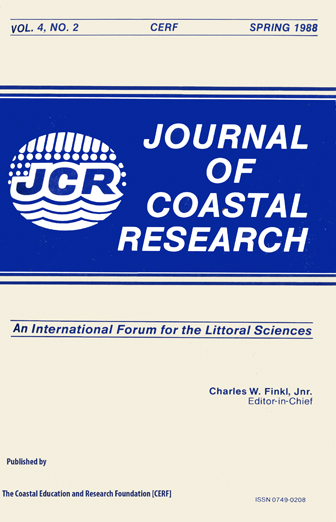Progressive Cementation in Pleistocene Carbonate Sediments Along the Coastal Area of Alexandria, Egypt
Keywords:
Egypt, limestone, cementation, interglacial, Pleistocene, earthquakes, eustatic changes, offshore barsAbstract
One of the Pleistocene offshore carbonate rocky formations of Alexandria, the Miami Formation, was studied to trace the progressive sequence of cementation. Petrography, mineralogy and geochemistry of the collected samples were investigated by several techniques as thin sections, scanning electron microscopy (SEM), X-ray diffraction and atomic absoprtion spectrophotometry (AASl). Calcite, aragonite, quartz and feldspar form the mineralogical constituents; high Mg-calcite was absent. A general increase in concentrations of Ca, Mg, Sr, Fe and Mn was observed from the topmost layers of the formation downwards. However, there is a limited application of the use of geochemical and mineralogical results as indicators of the progressive cementation. The common cement types are micrite, blocky sparry calcite and aragonite. The progressive sequence of cementation took place in the vadose, marine and mixed phreatic zone. The precise age of the formation studied is uncertain from the results of the present study, and in the absence of reliable dating information. Earlier hypotheses connecting the offshore formations of Alexandria to one of the last interglacial bars are therefore questioned.


